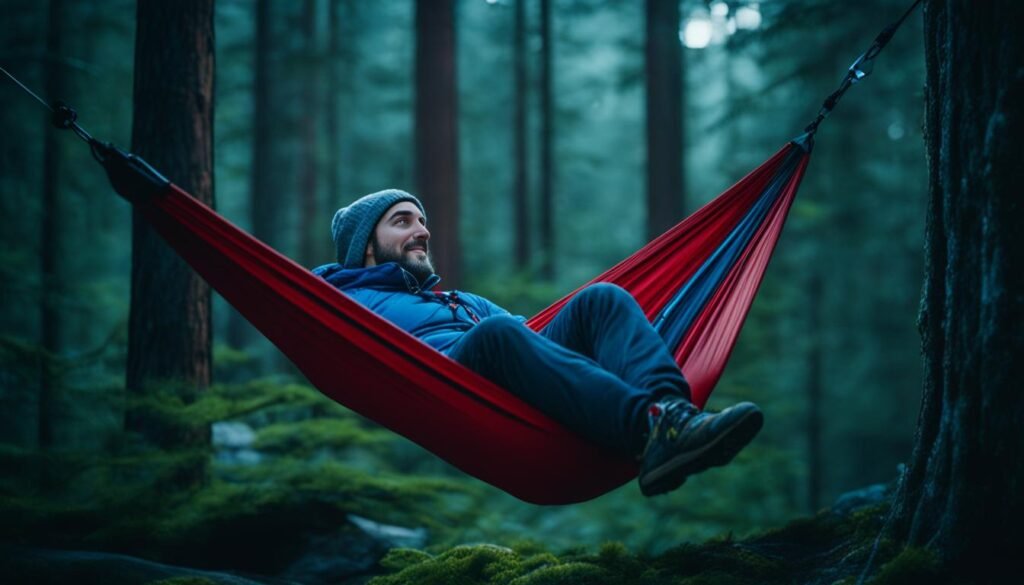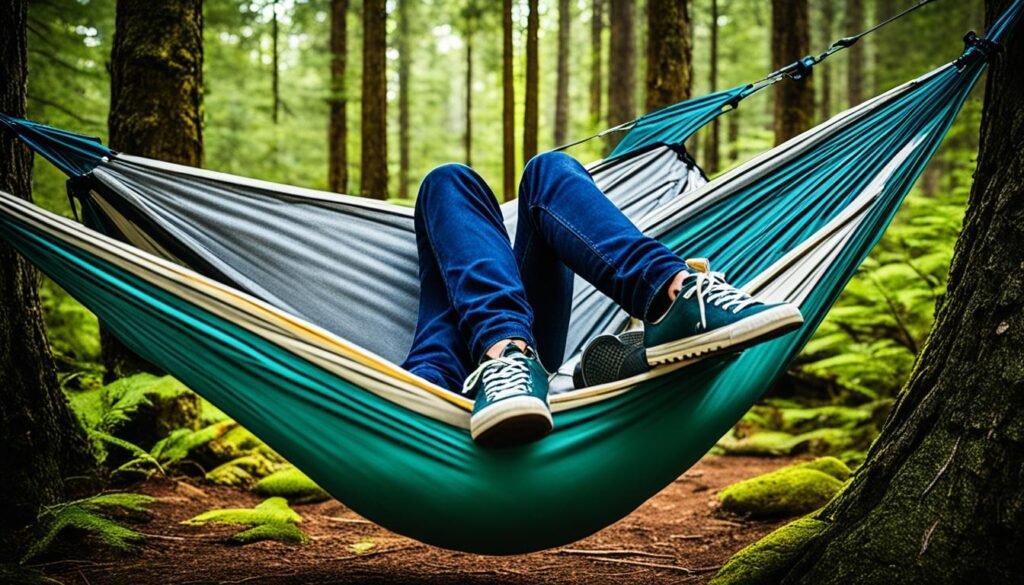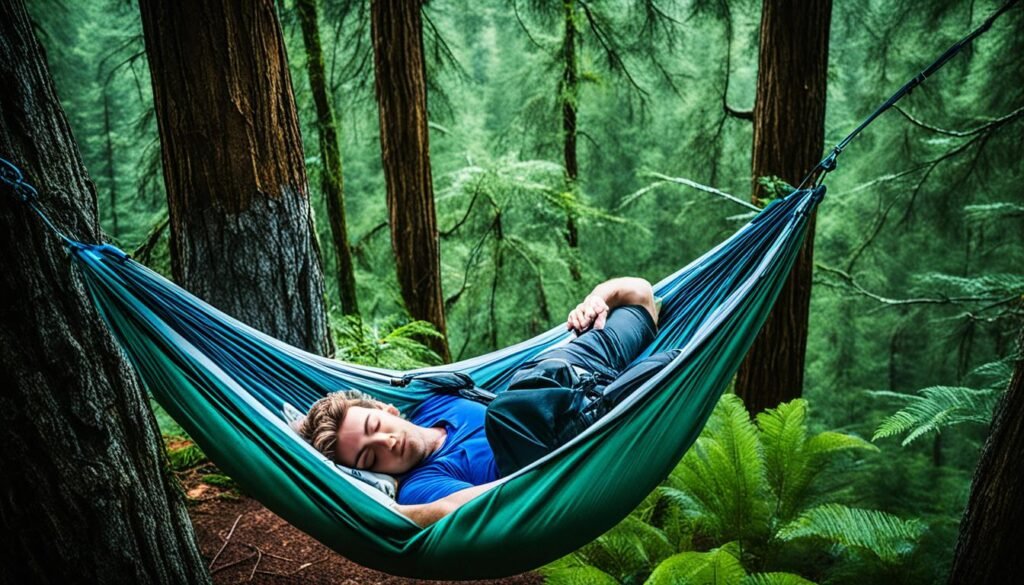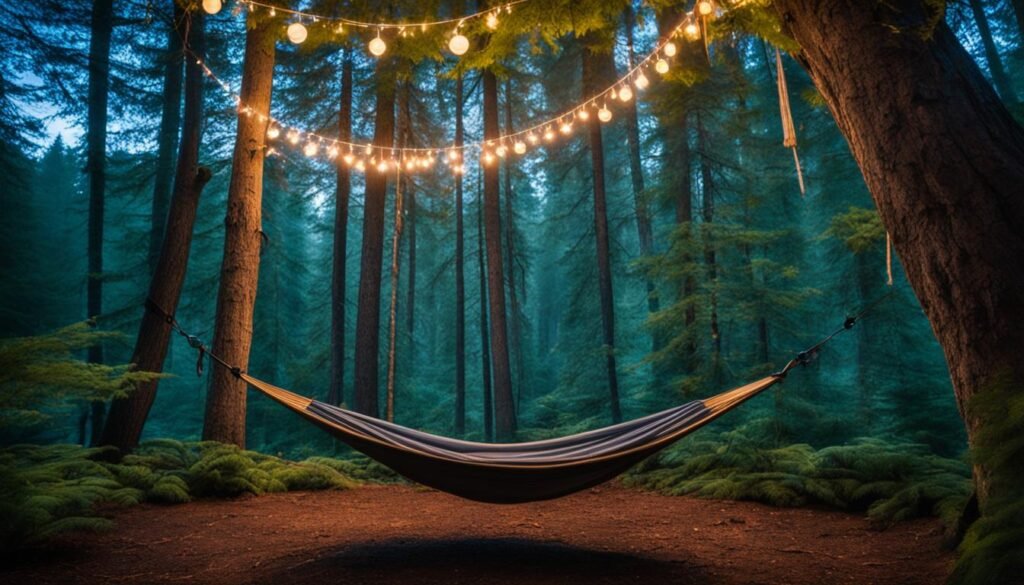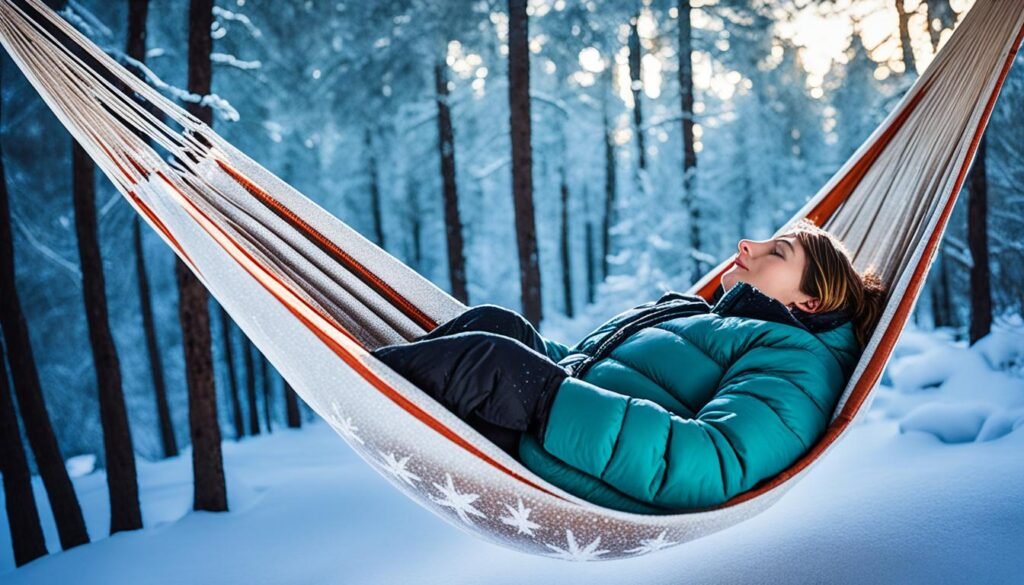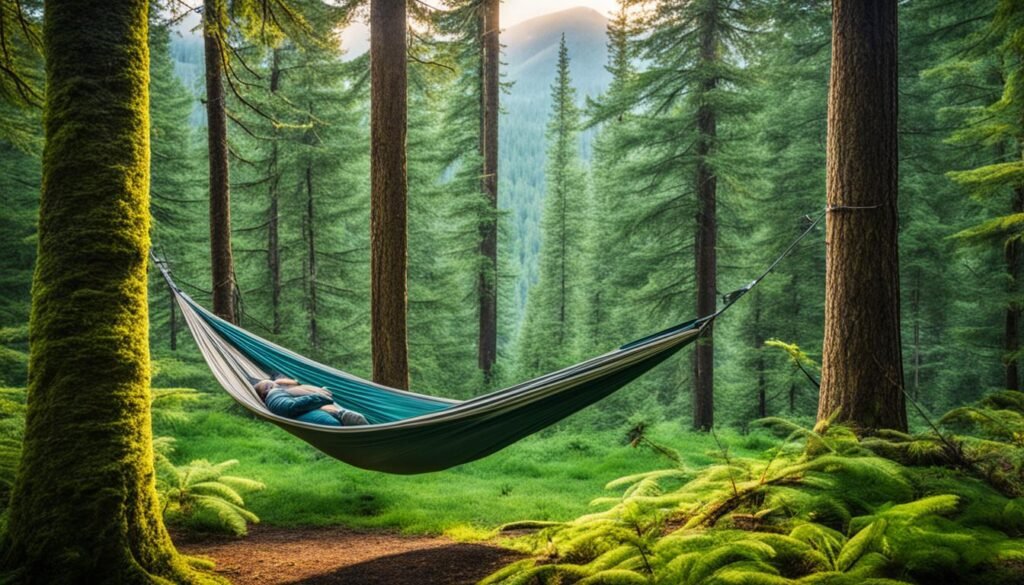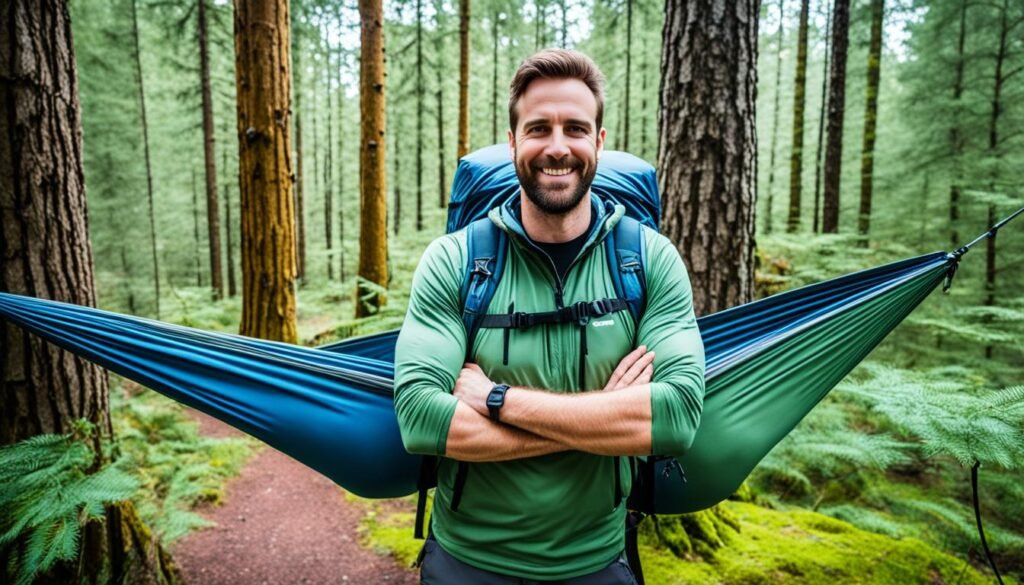Hammock camping is a fun way to connect with nature. It lets you relax outdoors in a unique way. But, you must know the rules for setting up hammocks in different places before starting.
Where you choose to camp, like in national or state parks, will have its own rules. These rules help protect nature and make sure everyone is safe. Following them lets you enjoy your trip without any problems.
This article talks about the laws and tips for hammock camping in the United States. We will give info on good places for hammock camping.
Key Takeaways:
- Research the specific rules and regulations for hammock camping in the national park or state park you plan to visit.
- Follow best practices for hanging your hammock, such as using tree protection straps and avoiding fragile vegetation.
- Consider using a hammock stand in areas where trees are scarce or unsuitable for hammock camping.
- Choose popular locations for hammock camping, such as Denali National Park and Ocala National Forest.
- Respect the environment and leave no trace behind to preserve the beauty of outdoor spaces.
Hammock Camping Laws in National Parks
Knowing the rules for hammock camping in national parks is key. Most national parks in the U.S. allow it. But, each park has its own rules you must follow.
Each park has different laws for hammock camping. Some parks have areas just for hammocks. Others let you hammock camp in the wild. Make sure to look up the rules for the park you’re visiting.
In Yosemite National Park in California, you can only use certain campgrounds for hammocks. But, Great Smoky Mountains National Park in Tennessee and North Carolina lets you hammock camp in the wild, if you follow their rules.
In parks with few trees or harsh weather, officials may suggest hammock stands. These stands let you hammock camp where trees are not available.
Before you hammock camp in a national park, know its specific rules. Check the park’s official website or contact park authorities for the latest on rules, permits, and any limits.

National Parks Hammock Camping Rules
| National Park | Hammock Camping Regulations |
|---|---|
| Yosemite National Park, California | Designated campgrounds only. Hammock camping outside of these areas is prohibited. |
| Great Smoky Mountains National Park | Hammock camping is permitted in the backcountry, following park regulations. |
| Yellowstone National Park, Wyoming | Some campgrounds allow hammock camping, but check specific regulations for each location. |
| Acadia National Park, Maine | Hammock camping allowed in designated areas. Check park regulations for details. |
Hammock Camping Laws in State Parks
National parks aren’t the only option for hammock camping. Many state parks in the U.S. also welcome hammock campers. But, each state park has its own rules for hammock camping.
It’s important to know the rules before you go. Look up the guidelines for each park you plan to visit. This makes sure your trip is fun and follows the rules.
Some parks have special spots for hammock camping. Others might need you to get a permit or book a spot. Always check the park’s website or call them to get the latest info. This helps you avoid any trouble and have a smooth trip.
Examples of State Park Hammock Camping Regulations:
State Park A: Only camp in marked areas for hammock camping. You need a permit, which you can get online or at the office.
State Park B: You can camp anywhere except day-use areas. No permit needed, but do register when you get there.
Rules for hammock camping in state parks differ a lot. Knowing and following each park’s rules is key. It keeps the parks nice for everyone and protects nature.
By sticking to the rules, you get to enjoy nature’s beauty through hammock camping. Always leave the place as you found it, for future visitors to enjoy too.
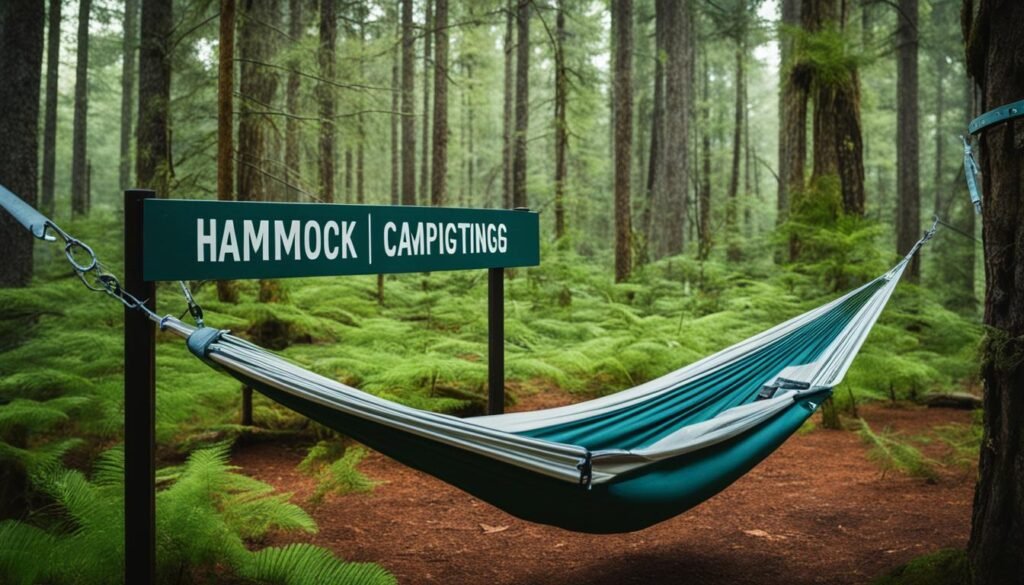
Best Practices for Hammock Camping
When you go hammock camping, there are key practices to follow. These practices reduce harm to nature and make your trip safe and fun. They help you enjoy your hammock camping to the fullest.
Choosing Suitable Trees
Choose trees with strong roots to support your weight for hanging your hammock. Find big, healthy trees with strong branches. Don’t use young or weak trees as they might get damaged.
Using Tree Protection Straps
Using tree protection straps helps avoid damage to the tree bark. These straps spread the hammock’s weight evenly. This lessens the stress on the tree. Make sure to put the straps around the trees at least 6 feet up for safety.
Avoiding Fragile Vegetation and Prohibited Areas
Be careful not to set up your hammock over delicate plants or off-limit places. Damaging plants or camping in restricted areas hurts the ecosystem. Always follow the camping rules to protect nature and its beauty for all.
Considering a Hammock Stand
If there are no good trees around, a hammock stand is a good option. Hammock stands let you camp anywhere, even with no trees. They’re great for open spaces or places with few suitable trees.
Keeping these best practices in mind will make your hammock camping eco-friendly and enjoyable. Always camp responsibly, respecting nature and its rules. This helps save our beautiful outdoors for future generations.
Popular Locations for Hammock Camping
Many amazing places in the United States are perfect for hammock camping. You can find beautiful nature scenes and great spots for an outdoor adventure everywhere. From wild forests to calm beaches, there’s a place for every kind of camper.
1. Denali National Park, Alaska
Denali National Park in Alaska is a great spot for an unforgettable hammock camping trip. It has tall mountains, wide open tundra, and lots of animals. Imagine chilling in your hammock and looking at Denali, the tallest mountain in North America.
2. Grand Canyon National Park, Arizona
The Grand Canyon National Park is another famous place for hammock camping. This park is known worldwide for its amazing views, big cliffs, and the Colorado River. Hang your hammock by the edge to see an incredible sunrise or sunset.
3. Acadia National Park, Maine
Acadia National Park in Maine is perfect for those who love the coast and rocks. It has green forests, rock peaks, and amazing ocean sights. Walk around the beautiful trails, listen to the waves, and watch the sunrise from Cadillac Mountain.
4. Ocala National Forest, Florida
Ocala National Forest in Florida is a top choice in the southeast. It has lots of places to hang your hammock under big pine trees. Go hiking, swim in clear springs, and see the special plants and animals there.
5. Hoosier National Forest, Indiana
Hoosier National Forest in Indiana is peaceful and hidden away. It has soft hills, calm lakes, and long trails. Find a nice spot for your hammock and listen to nature’s calming sounds.
6. Prescott National Forest, Arizona
Prescott National Forest in Arizona is perfect for campers who love beautiful views and being active outside. See the lakes, walk through pine forests, and enjoy the views from the granite peaks. Find a quiet place for your hammock and spend a calm night under the stars.
These places show just a few options for hammock camping in the United States. Whether you like mountains, forests, or the coast, nature’s beauty is waiting. Set up your hammock and dive into the peace and adventure of hammock camping.
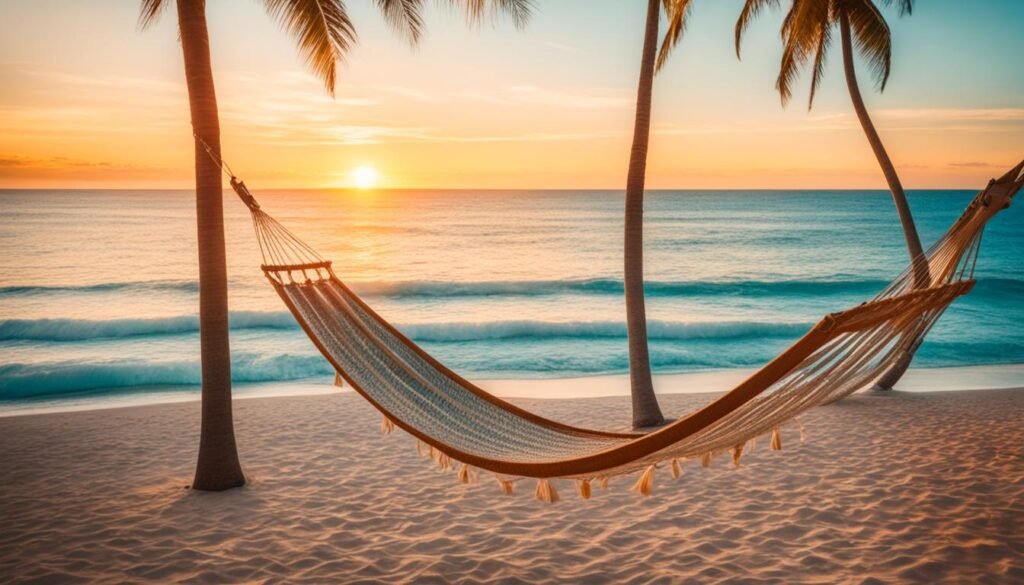
What Are the Best Places to Hammock Camp?
Some of the best hammock camping locations include national parks such as Yosemite and Grand Canyon, as well as tropical destinations like Hawaii and the Caribbean. Other ideal spots are Appalachian Trail and Banff National Park, offering breathtaking views and natural beauty for a peaceful outdoor experience.
Conclusion
Hammock camping is a fun outdoor activity you can do in many places in the United States. It’s key to know the hammock camping rules of each place you visit. This way, you can have a great and safe time hanging in your hammock.
Before you go hammock camping, make sure to pick the right spots that allow it. Places like Denali National Park in Alaska and the Grand Canyon in Arizona are perfect. You can also set up your hammock in state parks like Ocala National Forest in Florida.
It’s very important to take care of nature while you’re out there. Always leave the place as you found it. This helps make sure these beautiful spots can be enjoyed by others in the future. By respecting nature, your hammock camping trip will be memorable in all the right ways.
FAQ
Can I hammock camp anywhere?
Hammock camping is possible in many places. Yet, you must follow the rules and guidelines. Every national park, state park, and camping area has its own set of rules. So, it’s important to look up and understand the regulations for each place you go.
What are the hammock camping laws in national parks?
Most national parks in the US welcome hammock campers. Yet, each park has its own rules. This includes designated areas and backcountry spots where you can use hammocks. Some parks suggest using stands in certain spots. Always check the park’s rules before you hang your hammock.
What are the hammock camping laws in state parks?
State parks often allow hammock camping too, but each one has its own rules. Some have specific areas for hammock use. You might need a permit or a reservation. Do some research and learn the rules of the state park you want to visit. You can look on the park’s website or call them for the latest info.
What are the best practices for hammock camping?
To protect nature and stay safe, follow best practices for hammock camping. Choose trees with strong roots to hang your hammock. Use tree straps to avoid harming the tree bark. Don’t set up over delicate plants or in off-limits areas. In some spots, using a hammock stand is a good idea. This is because there might not be suitable trees.
Where are some popular locations for hammock camping?
There are many great places for hammock camping in the US. Some popular spots are Denali National Park in Alaska and Grand Canyon National Park in Arizona. Also, Acadia National Park in Maine, Ocala National Forest in Florida, and Prescott National Forest in Arizona. Before you go, make sure to look up and choose locations that fit what you like to do outdoors.

